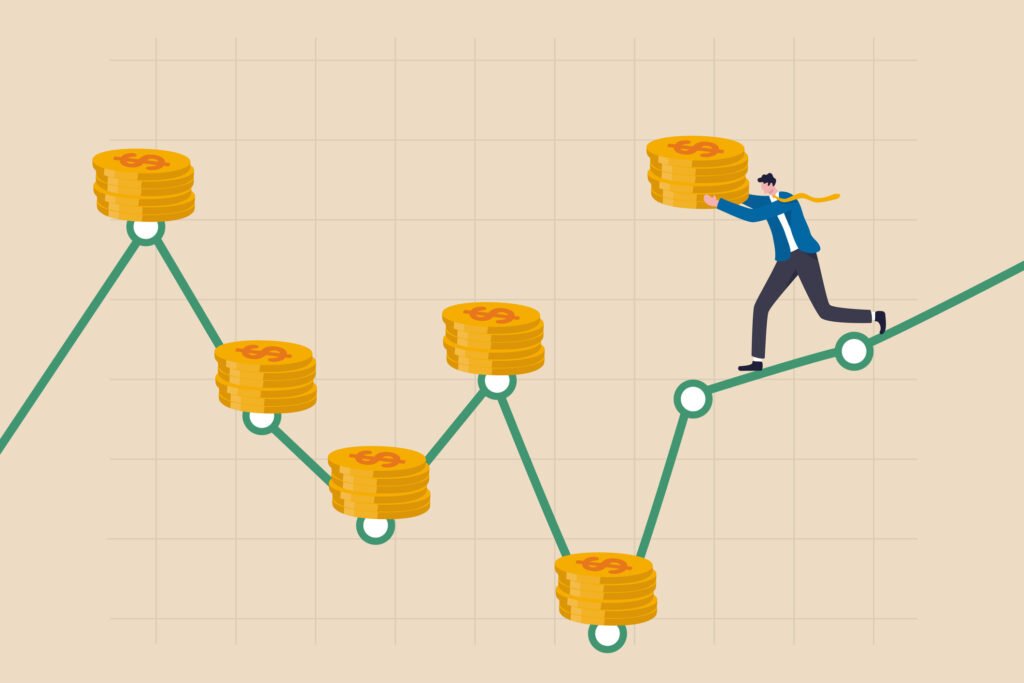Algorithm Trading
What is an algorithm?
An algorithm is a set of instructions for solving a problem or performing a task. A common example of an algorithm is a recipe, which consists of specific instructions for preparing a dish or a meal. Each computerized device uses algorithms to perform its functions in the form of hardware or software routines.
In finance, algorithms have become important in the development of automated and high-frequency (HFT) trading systems, as well as in the pricing of sophisticated financial instruments such as derivatives.
KEY TAKEAWAY
An algorithm is a set of instructions for solving a problem or accomplishing a task.
Every computerized device uses algorithms, which reduce the time required to do things manually.
Algorithmic trading, also known as automated trading or black box trading, uses a computer program to buy or sell securities at a rate that is impossible for humans.
Understanding Algorithms
Financial companies use algorithms in areas such as loan pricing, stock trading, asset management, and many automated functions. For example, algorithmic trading, known as algo trading, is used to decide when, price and quantity of stock orders Also known as automated trading or black box trading, algo trading uses computer programs to buy or sell stocks at a rate that is impossible for humans.
Much of the stock trading in the United States is done using algorithms and they are also widely used in forex trading. Much of this is High-Frequency Trading (HFT), which is often used by hedge funds.
HFT involves the use of computers and sophisticated algorithms for trading. A side effect of algorithms is that the average length of time a stock is held has dramatically decreased from four years in the 1940s to less than a minute ten years ago.1
Computer algorithms make life easier by reducing the time it takes to do things manually. In the world of automation, algorithms allow workers to be more skilled and focused. Algorithms make slow processes more efficient. In many cases, especially in automation, algorithms can save businesses money.
As the prices of stocks, bonds, and commodities appear in various formats online and in trading data, the process by which an algorithm digests dozens of financial data becomes straightforward. The user of the program simply sets the parameters and gets the desired result when the actions meet the criteria of the trader.
Algorithms are used in trading to reduce the emotional aspect of investing. The algorithms are used by investment banks, hedge funds, etc. however, some algorithm-based programs and strategies may be purchased and implemented by retail investors. There are several types of algorithms depending on the strategies they use, such as arbitrage and market timing.
Types of Algorithmic Trading
Different types of trading algorithms help investors decide whether to buy or sell. The main types of algorithms are based on the strategies they employ. For example, an average reversion algorithm looks at short-term prices against long-term average prices, and if a stock goes much higher than the average, a trader can sell it for a quick profit. Other algorithmic strategies can trade timing, index fund rebalancing, or arbitrage. There are other strategies as well, such as fund rebalancing and scalping.

Arbitrage
Arbitrage aims to exploit the price difference between the same good in different markets. Algorithms can take advantage of this strategy by quickly analyzing the data and identifying the price differences, then quickly executing the buy or sell of those assets to capitalize on the price difference.
An asset can be traded at one price on one exchange, but at a different price on another: the algorithm would capitalize by buying the asset at the lowest price on the stock exchange and immediately selling it at the highest price on the stock Exchange. another bag.
Market Timing
Market timing strategies use backtesting to simulate hypothetical trades to build a trading model. These strategies aim to predict the behaviour of an asset over time. The algorithm then trades based on the best expected time to buy or sell. These strategies involve a lot of data sets and a lot of testing.


Averaging
Averaging strategies quickly calculate the average price of a stock over a period or range of trading. If the stock price is outside the average price, based on the standard deviation and past metrics, the algorithm will trade accordingly. For example, if the share price is lower than the average share price, it could be an interesting trade assuming it will revert to its average (i.e. an increase in price). This type of strategy is popular with algorithms.
Advantages and Disadvantages of Algos Trading
Trading with algorithms has the advantage of removing the human element from trading, but it also has its disadvantages.
Advantages
Perhaps the biggest benefit of algorithm trading is that it eliminates the human element. With algorithmic trading, the emotional part of trading is neutralized. The potential for over-trading is also reduced with computer trading, or under-trading, where traders can quickly become discouraged if a particular strategy does not produce results immediately. Computers can also trade faster than humans, allowing them to adapt more quickly to changing markets.
Disadvantages
The big problem with algorithmic trading is that it is computerized. Without electricity (electricity) or the Internet, algorithms do not work. Computer failures can also hamper algorithmic trading. Additionally, while an algorithm-based strategy may work well on paper or in simulations, there is no guarantee that it will work in actual trading. Traders can create a seemingly perfect model that works for past market conditions but fails in the current market.





